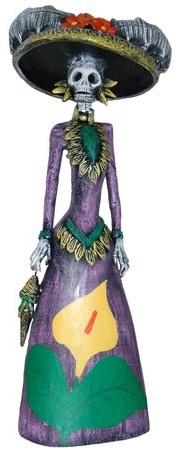Day of the Dead
The informant is a 19-year old student attending USC. She was born in Avellino, and has lived in central Mexico, London, and Italy in her life. She speaks Italian, Spanish, and English and is majoring in architecture. The following is what she shared with me about Day of the Dead from when she lived in Mexico for 6 years.
Informant: “In Mexico there was the Day of the Dead.”
Interviewer: “How do they celebrate it?”
Informant: “They made like alters with food, and they have it out for the dead. There are a certain amount of days it goes on.
Interviewer: “Did you have any friends who celebrated it?”
Informant: “Yes, but we did it at school too. We did the sugar skulls.”
Interviewer: “What’s a sugar skull?”
Informant: “It’s a skull made out of sugar. [Laughs]. You just bought them at the supermarket. You could decorate them yourself.
Interviewer: “What is Day of the Dead about?”
Informant: “To celebrate the Dead! The people that have passed on come back to life at night.”
Interviewer: “is it scary? Like are the dead perceived as bad?”
Informant: “No, it’s good. They are good spirits.”
Thoughts:
Day of the Dead is a pretty well known and considerably popularized holiday. It was interesting to hear how indifferently the informant was about Day of the Dead and the customs around it. Perhaps having lived in a culture where the dead aren’t perceived as “bad” or as haunting makes the whole notion of dead coming back to life something casual.
Talking to the informant about how Day of the Dead was celebrated in Mexico reminds me a lot of talking to Israeli soldiers when I was in Israel this summer about bar and bat mitzvahs in Israel. One might think that Jewish rituals would be more extreme or that people would be more devout in a Jewish state, but in fact, it seemed the opposite. All of us American-Jews were surprised to find out that for the Israeli soldiers we talked to, bar and bat mitzvahs (Jewish coming of age ritual) were just parties for the bar or bat mitzvah and his or her friends as opposed to the religiously-heightened ritual they are typically performed in the United States.

